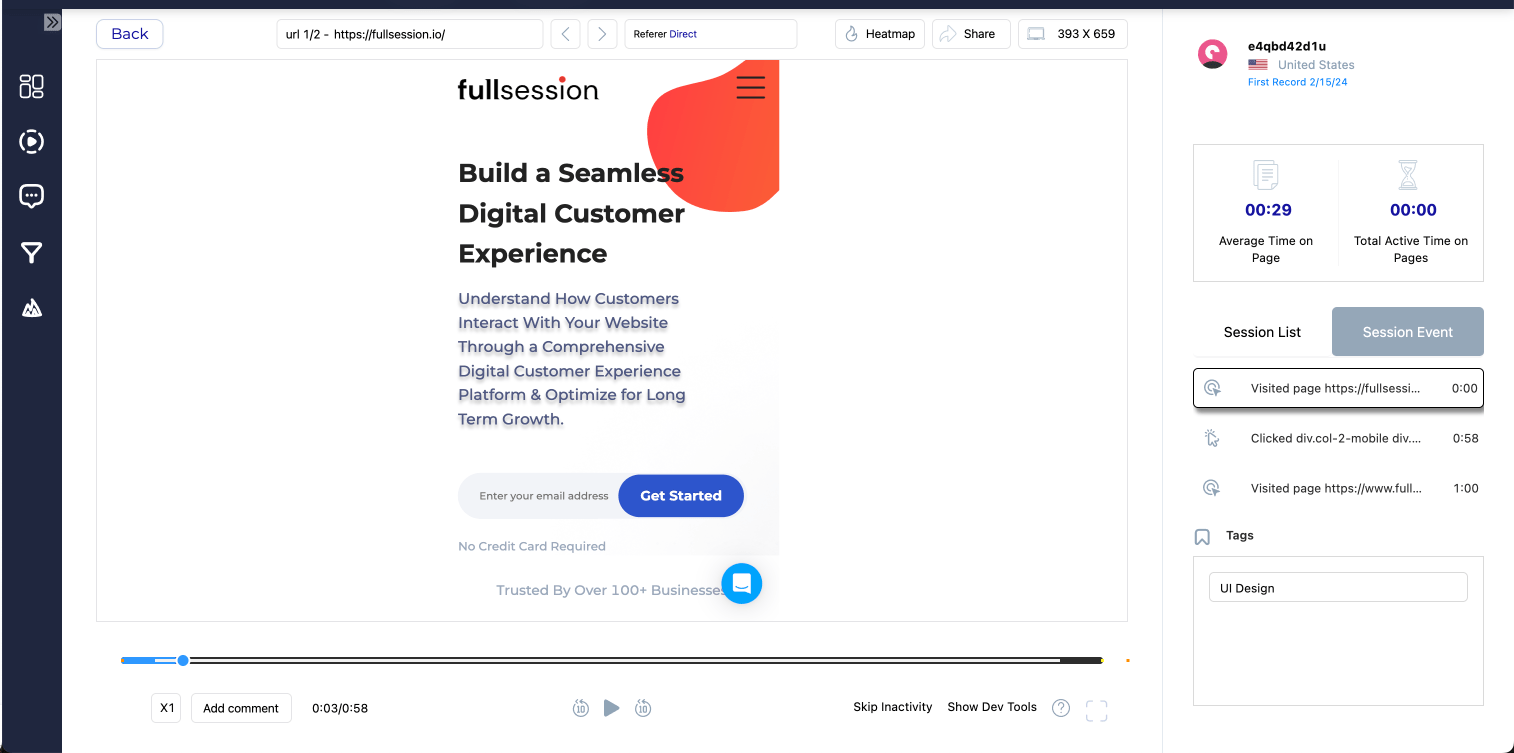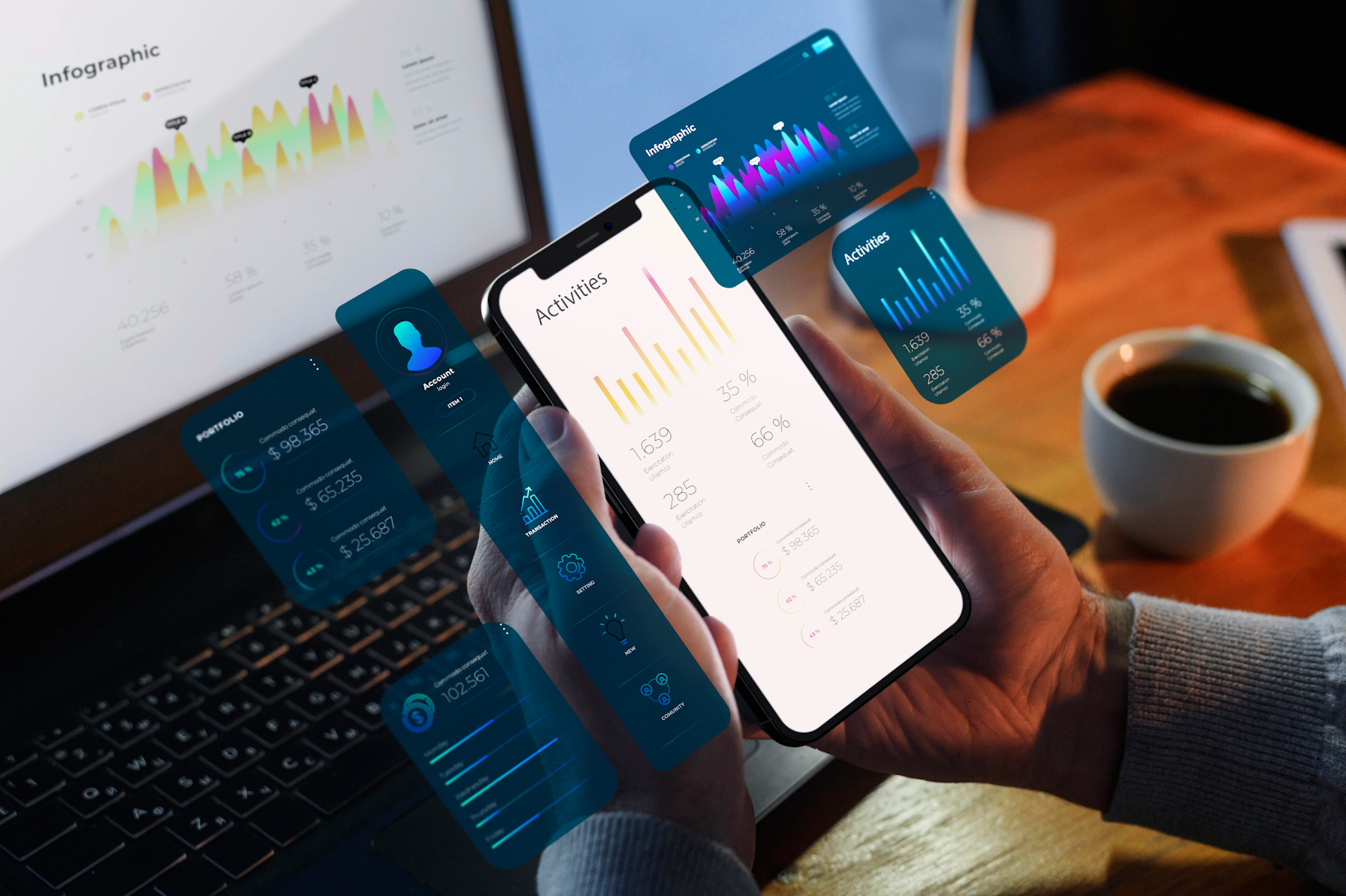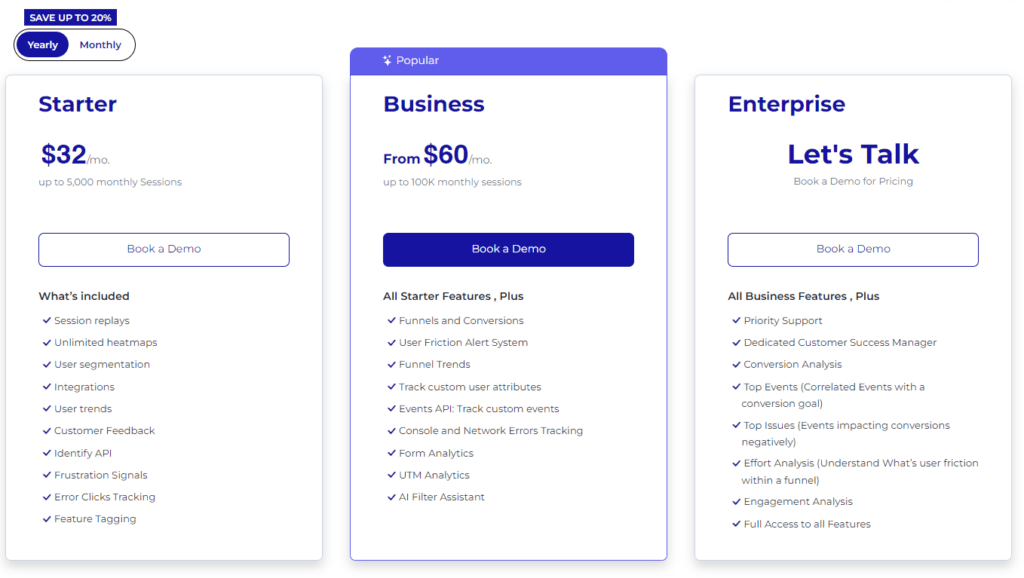Product usage analytics software help businesses track how users interact with their products, providing valuable insights to optimize user experiences...

What Is Mobile Analytics? And How Can It Improve UX?
According to recent statistics, more than 55% of website traffic comes from mobile devices. That said, optimizing your website for mobile is just as important as perfecting your desktop interface. One way to do that is through mobile analytics.
Understanding your mobile audience is a must to gain more insight into your website metrics. If your site isn't optimized for mobile, chances are you'll be missing out on conversions.
In this guide, we'll go through everything you need to create great user retention and experience through mobile analytics.
What is Mobile Analytics?
Mobile analytics provides improved user understanding of mobile websites, gathering and interpreting data from the mobile version of websites and mobile apps.
Mobile analytics has different parts to the process, which can be broken into 3 categories:
1. Data gathering: The process of using mobile app analytics platforms tools and software to gather mobile analytics data, e.g., user interactions.
2. Data analysis: Understanding user behavior analytics on your mobile site or mobile apps.
3. Optimization: Applying usage data to optimize your funnel and increase conversions on your mobile site.
Mobile analytics is a necessity to capture conversions across all of your site visitors, some being mobile users.
Why is Mobile Analytics Important?
Mobile surfing has long surpassed desktop use as smartphones have become a commodity. Most websites were quick to optimize for mobile to retain their existing audiences and attract new ones.
This means that you likely have strong competition, regardless of your industry or niche. Plus, it doesn't take much for a mobile web visitor to click out of your site.

Here are possible reasons that can contribute to a high exit rate:
Slow-loading web pages
Cluttered website design
Poor readability
Navigation issues
Information overload
Poor mobile optimization
These factors can affect both desktop and mobile interfaces, but let's focus on the last point. With poor mobile optimization, images may be too small or text may be hard to read. The site can look wonky and overall difficult to navigate.
Again, it doesn't take much for a web user to bounce and find another website.
Mobile analytics provides valuable insights into how can customers view your website through their mobile phones. Furthermore, it can be invaluable when employing a mobile-first strategy, which can help designers ensure the website is optimized for all devices.
Examples of Mobile Analytics Metrics
Mobile analytics helps you keep track of multiple parameters or metrics. Common examples include:
User Demographics
Knowing your app users' age, where they're from, what kind of device they use, and other details gives you a peek into who they are. In-depth knowledge of user demographics can be extremely useful for creating strategies to improve user engagement based on target audiences while eliminating a lot of the guesswork.
Additionally, you can determine whether your current marketing strategy is working (i.e. if your target audience is actually visiting your site).
Behavioral Data
Mobile analytics tools help developers analyze user engagement and user behavior. Understanding how long users stay engaged, how often they open the mobile websites, which features they use, and how they interact, is a must for optimizing site or app performance.
Primarily, you get to see the specific parts of your site that need the most work.
Daily and Monthly Active Users
Mobile analytics measures the number of users who engage on your mobile website daily and monthly, deep-diving into data that would determine what needs to be improved on your mobile sites.
Mobile Analytics vs. Web Analytics

Mobile analytics tools give you the details on how users interact with your mobile site on their phones, helping you understand user behavior. How they click, swipe, and use all sorts of features. On the other hand, web analytics shows how your website is doing overall.
Mobile analytics focuses more on individual users compared to web analytics, especially if your site comes with an app version. It can be easier to segment users and analyze their behavior with mobile web or app analytics.
By understanding both, you can use mobile analytics tools to incorporate strategies to optimize your website based on how you would want users to view your website on a small phone screen.
Common Mistakes When Tracking Mobile Analytics
Companies that use mobile analytics can unlock a powerful new tool to improve user engagement, conversions, and other measurements of success. However, there are still a lot of pitfalls to be wary of, such as:
Failing to Set Goals
Mobile web or mobile app analytics tools provide a wide variety of information to help you optimize your site for all users. This is primarily a great thing except when you fail to set clear objectives.
What are your current optimization goals, and what key metrics do you need to track to meet those goals? Set clear objectives to ensure you don't waste your time tracking data and not knowing what to do with it.
Ignoring Mobile-Specific Metrics
While desktop web analytics track clicks, scrolls, and keyboard actions, mobile users scroll, pinch, and tap the screen to navigate. Mobile analytics platforms sometimes fail to measure app-specific actions like screen swipes.
Zeroing in on One Success Metric
There are plenty of ways to use mobile analytics to measure success, and it helps to prioritize a few metrics at a time. However, that doesn't mean you should focus on one and put the others on the back burner.
For instance, you might see a huge number of clicks on your landing page. Great! But are visitors going further than that?
Tracking Everything
Inversely, it doesn't make sense to try and track everything all at once. Sure, all metrics have some level of importance, but that doesn't not everything will be relevant to your goals. Focus on the most important metrics depending on what you want to improve in the user journey.
Jumping to Conclusions
When you know how mobile analytics work, you should know not to take things at face value. Mobile and web analytics give you numbers to work off of, not a definite conclusion or a sign of success.
Picture this: you're trying to see why there are a lot of abandoned carts. You check the user behavior data and see that some customers complete the entire purchasing process, indicating there's nothing wrong with the site's shop functionality. You assume they just change their minds before purchasing, but should you have dug deeper, you would have discovered a major bug for one segment, say, Android users.
Overlooking User Privacy
There are clear boundaries you cannot cross regarding customer data privacy in relation to mobile analytics. Ensure your web or mobile app analytics tools are in line with current privacy policies.
Stopping at Analysis
Mobile analytics solutions provide important insights into improving your site's overall UX and UI. However, analytics platforms can also determine pain points in your marketing campaigns and help you improve them based on user behaviors on marketing-specific elements.
Who Should Get a Mobile Analytics Tool?
Any company can benefit from a clear view of user engagement metrics. For some people, however, mobile analytics becomes a necessity. These include:
Marketing teams: These tools make it easier for marketing teams to advance strategies and, ultimately, generate more leads.
Designers: Developers and designers won't need to spend hours finding bugs that downgrade the user experience on mobile devices. Mobile analytics tools help technical teams find these errors right away.
Customer success and support teams: These teams can work hand in hand with developers to analyze user sessions and determine where things are going wrong and what needs improvement.
How to Track Mobile Analytics with FullSession
With FullSession, you can filter web analytics to show only mobile users, giving you insights on user engagement, and experience, along with other valuable metrics.

More specifically, you can track user behavior such as session length, frequency of use, and navigation paths on mobile websites.
Aside from the metrics mentioned above, here are some of the ways FullSession can help optimize your site for mobile devices.
Dead Clicks
Dead clicks may indicate broken elements or links, high latency issues, and a confusing user interface. FullSession shows you the pages and elements that generate these dead clicks, pointing you to a much easier fix.
Top Referrers
FullSession's analytics platform shows where you get the most visitors from, including web browsers and internal links. This data can help you improve SEO, particularly when it comes to link building.
Heatmaps
Heatmaps allow you to see how users engage with the website, where they're clicking, and which elements they're ignoring. Analyzing a website heatmap will help you understand what items attract the most attention, what information is most important to users, which elements contribute to conversion, and how users interact with them.
Live Sessions
FullSession gives you access to live and recorded sessions to provide a visualization of how users navigate your site on desktop and mobile. These sessions can help you monitor user behavior and spot frustration signals.
User Feedback
FullSession lets you ask customers for instant feedback to figure out where their pain points are. More importantly, you can target feedback based on the device your visitor is using, which would also help with better user segmentation.
Track Mobile Analytics on Your Site With FullSession
It takes less than 5 minutes to set up your mobile analytics tracking, with FullSession, and it's completely free!
FullSession Pricing Plans

Here are more details on each plan.
- The Starter plan costs $39/month or $32/year and allows you to monitor up to 5,000 monthly sessions with up to 6 months of data storage.
- The Business plan costs $75/month or $60/year and helps you to track and analyze up to 100,000 monthly sessions with up to 12 months of data storage.
- The Enterprise plan has custom pricing and offers customizable sessions plus full access to all features.
FAQs About Mobile Analytics
How often should I check my mobile analytics?
It depends on how much traffic you're getting. Checking it weekly is a good starting point in mobile analytics but regular monitoring is recommended to analyze user behavior and make more adjustments.
Is mobile analytics only for big companies?
No. A lot of successful companies use mobile analytics regardless of size.
Is it too late to start using mobile analytics?
If you're just starting a new site, having a mobile analytics tool can help you optimize using a mobile-first strategy. Nevertheless, it's not too late even if your website has already been up for months or years.




